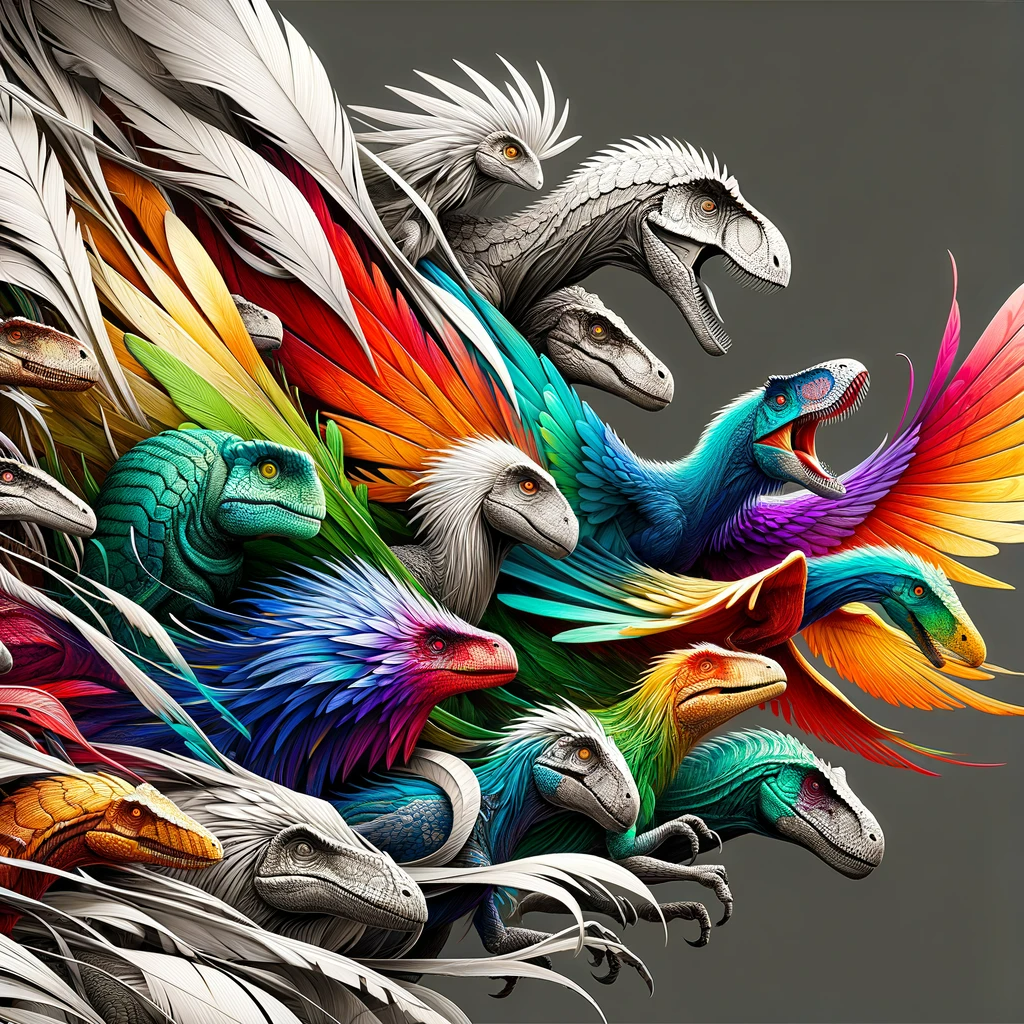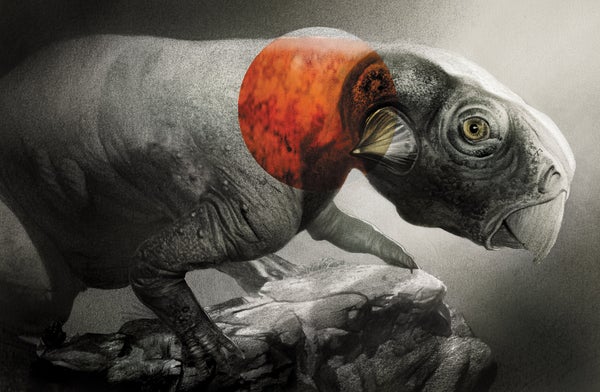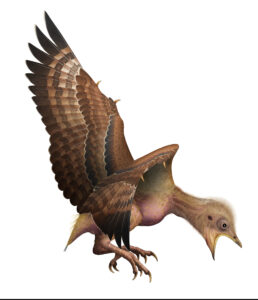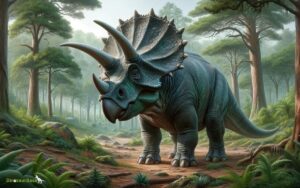Are Dinosaur Birds Ancestors? Unveiling the Truth
Birds are the modern descendants of dinosaurs. This connection is rooted in extensive scientific evidence.
Dinosaurs, which once dominated our planet, left a fascinating legacy: birds. The link between mighty dinosaurs and today’s feathered creatures may seem perplexing at first. Yet, evolutionary biology offers compelling evidence that birds evolved from theropod dinosaurs, a group that includes the renowned Tyrannosaurus rex.
This revelation came from the discovery of shared features like hollow bones, nesting behaviors, and specific bone structures. Scientists deciphered these evolutionary clues through fossil records and cutting-edge genetic analysis. These findings have revolutionized our understanding of dinosaurs and their connection to current biodiversity. Embracing this knowledge can enrich our appreciation for the avian species soaring in our skies, as they embody the closest living connection to an era long past.

Linking Dinosaurs And Birds
Long ago, dinosaurs roamed Earth, no birds in sight. Now, birds fill our skies. How did this change happen? Science shows a link between these ancient giants and our feathered friends.
Fossil Records: Clues To An Evolutionary Puzzle
Fossil records act like a storybook from the past.
| Year Found | Dinosaur | Significant Trait |
|---|---|---|
| 1861 | Archaeopteryx | Bird-like feathers |
| 1996 | Sinosauropteryx | Primitive feathers |
Each fossil discovery adds a piece to the puzzle. Birds and dinos share bone structures, like hollow bones for lightness.
Feathered Discoveries: Bridging The Gap
New fossils show more than bones. They show feathers. Not just any feathers, but those designed for flight.
- Velociraptor had quill knobs, like eagles today.
- Yutyrannus showed us even big dinos had feathers.
These are clues that dinosaurs evolved into birds. Each discovery brings us closer to answers.

Credit: www.amazon.com
Debating Dinosaur-bird Evolution
The idea that today’s birds descend from dinosaurs captivates both scientists and the public alike. A rich fossil record fuels the debate on dinosaur-bird evolution. Key discoveries often ignite fresh controversies and challenge established theories. Let’s delve into the contentious discussions that shape our understanding of this evolutionary marvel.
Controversial Theories And Skepticism
The journey from fierce dinosaurs to flying birds is a topic of hot debate. Unique theories regularly surface, shaking the status quo. Critics question new hypotheses, demanding robust evidence. This skepticism plays a crucial role in refining our evolutionary narrative.
- Feathered dinosaurs: Some scientists postulate that feathers were not exclusive to birds.
- Flight origins: Debates flare over how flight evolved; whether from the trees down or the ground up.
- Bird ancestors: The exact lineage leading to birds prompts ongoing research and discussion.
Consensus Among Paleontologists
Despite disagreements, common ground exists. Paleontologists largely agree that birds are living dinosaurs. Consensus stems from persuasive fossil evidence. Birds share many features with theropod dinosaurs.
| Feature | Birds | Theropod Dinosaurs |
|---|---|---|
| Hollow bones | Yes | Yes |
| Wishbone (Furcula) | Yes | Often |
| Three-toed limbs | Yes | Yes |
For definitive answers, the quest continues. Each discovery sheds light on the mysterious transition from land-roaming giants to the birds that soar our skies today.
The Role Of Archaeopteryx
Imagine finding a creature with feathers like a bird and teeth like a dinosaur. That’s Archaeopteryx. It tells us how birds evolved from dinosaurs. This discovery was huge for science. Let’s dig into the details of this ancient wonder.
A Fossil Link: Characteristics Of Dinosaurs And Birds
Archaeopteryx is a star fossil linking birds and dinosaurs. These creatures had both bird and dino traits.
- Feathered wings: Just like birds, for flight.
- Long dino tail: Not seen in modern birds.
- Sharp teeth: Showing their dino side.
| Traits of Archaeopteryx | Dinosaurs | Birds |
|---|---|---|
| Feathers | No | Yes |
| Tail | Long | Short |
| Teeth | Yes | No |
This combination made Archaeopteryx a key piece in the puzzle of evolution.
Impact On Evolutionary Biology
Archaeopteryx changed how we think about the past. It showed us a clear link in evolution.
- Evidence of transition: It proved that birds came from dinosaurs.
- Helped define species: Scientists could group animals better.
- Pushed research: Sparked new questions and studies.
This little creature had a big role. It helped shape our understanding of life’s history. Archaeopteryx is a true evolutionary icon.

Credit: www.scientificamerican.com
Bird-dinosaur Similarities
The past roars to life when we explore the connection between dinosaurs and their modern-day descendants, birds. These creatures share a lineage that baffles and fascinates scientists and enthusiasts alike. In the journey to uncover the mysteries of evolution, we discover that birds carry the legacy of the mighty dinosaurs in their veins.
Anatomical Parallels: From Scales To Feathers
Dinosaurs and birds share striking anatomical similarities. Both have scales and feathers as part of their skin’s makeup. Let’s delve into the physical traits that forge a link from the ancient reptiles to the birds we see today:
- Feathers: Simple feathers likely started with dinosaurs. These evolved into complex designs in birds for flight.
- Skeletal structure: Hollow bones found in birds began with theropod dinosaurs, aiding in their agility.
- Clawed hands: The wings of birds bear a resemblance to the clawed limbs of certain dinosaurs.
- Fused bones: Both have certain bones fused for strength, like those in the pelvis.
Behavioral Traits And Nesting Habits
Actions often tell more than appearances. Birds and dinosaurs not only look alike but also behave alike. Here are common traits of these ancient and modern creatures:
| Behavior | Dinosaur | Bird |
|---|---|---|
| Parental Care | Nest-building and guarding | Same, with incubation |
| Mating Displays | Courtship rituals presumed | Elaborate dances and calls |
| Flocking | Possible in some species | Common, especially in migration |
| Brooding Behavior | Eggs incubated in nests | Same, warmth from parents |
The Genetic Connection
The Genetic Connection between dinosaurs and birds has long captivated scientists and enthusiasts alike. Unveiling this connection is like solving a prehistoric puzzle. Understanding the relationship helps explain the evolution of species over millions of years.
Dna Analysis And Molecular Evidence
Scientists explore ancient links through advanced tools. DNA analysis sheds light on how species are related. Techniques such as DNA sequencing unravel genetic blueprints. These blueprints often tell a story of shared ancestry.
- DNA from fossils offers clues about dinosaur genes.
- Comparison with modern birds reveals surprising similarities.
- Genes responsible for feathers in birds link back to dinosaurs.
The molecular evidence confirms that birds carry genetic remnants of their dinosaur ancestors. Proteins in fossils often match those in birds. This similarity suggests a direct evolutionary path.
Implications For Modern Bird Species
What does this mean for today’s birds? Modern bird species are living dinosaurs in a way. They are the descendants of a small group of theropod dinosaurs.
- Evidence places birds in the dinosaur family tree.
- Characteristics like beaks and feathers developed from these creatures.
- Learning about dinosaur DNA helps understand bird behavior and anatomy.
The genetic link helps identify how birds have evolved. It aids in conservation efforts. Protecting bird habitats can be seen as preserving a part of Earth’s ancient history.

Credit: www.nhm.ac.uk
Challenging Traditional Beliefs
‘Challenging Traditional Beliefs’ uncovers a fascinating twist in our understanding of dinosaurs and birds. Science once drew a stark line dividing these prehistoric giants from our modern feathered friends. Yet, remarkable discoveries have blurred these boundaries, urging us to rethink what we know.
Public Perception And Educational Curricula
Dinosaurs, the magnificent creatures of the Mesozoic era, hold a solid place in popular culture. Movies, books, and toys present them as reptilian behemoths. This imagery has rooted firmly in public perception.
Traditional educational curricula mirror this sentiment. Schools teach us about dinosaurs as scaly and distant relatives of lizards. Bird connections rarely make it to lesson plans. The need to update teaching materials is evident.
Fossil Misconceptions And Reinterpretations
Fossil discoveries once fit neatly into our reptilian narrative of dinosaurs. The reality is far more intriguing. Paleontologists now often find fossils with features pointing to avian connections.
‘Velociraptor’, for instance, once portrayed as a scaly predator, had quill knobs. Birds have these knobs for feather attachments. Misinterpretations fade as new evidence suggests many dinosaurs sported feathers.
- Theropods, like ‘T. rex’, shared bird-like traits.
- Fossils show feather-like structures in unexpected species.
Reinterpretation of these signs has brought a wave of change. Museums update exhibits to reflect these findings.
Conclusion
As the legacy of dinosaurs lives on through modern birds, we are reminded of nature’s incredible adaptability. These feathered descendants provide insight into a prehistoric past, bridging an evolutionary gap. We marvel at their survival, embracing the wonder that birds are indeed living dinosaurs amongst us.
Let’s cherish and study them, honoring our planet’s ancient history.




